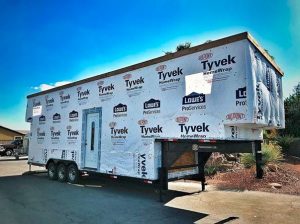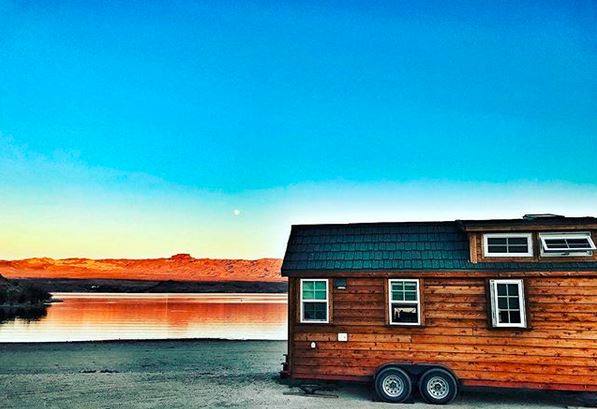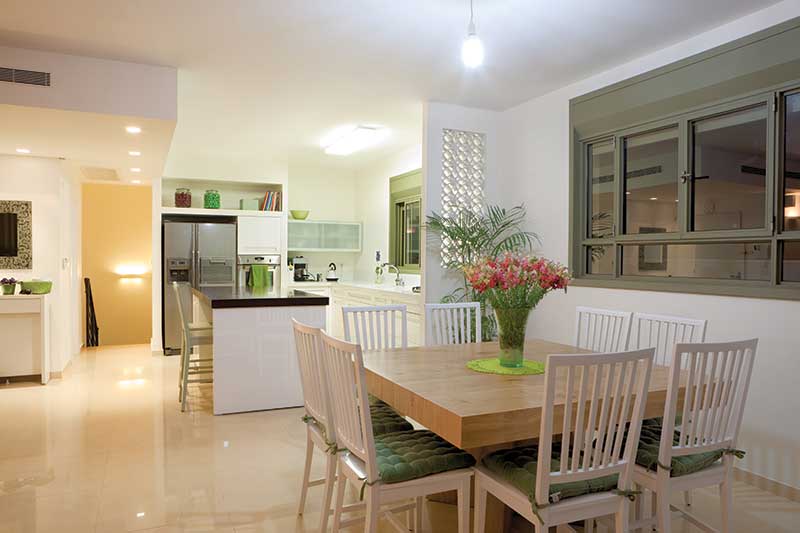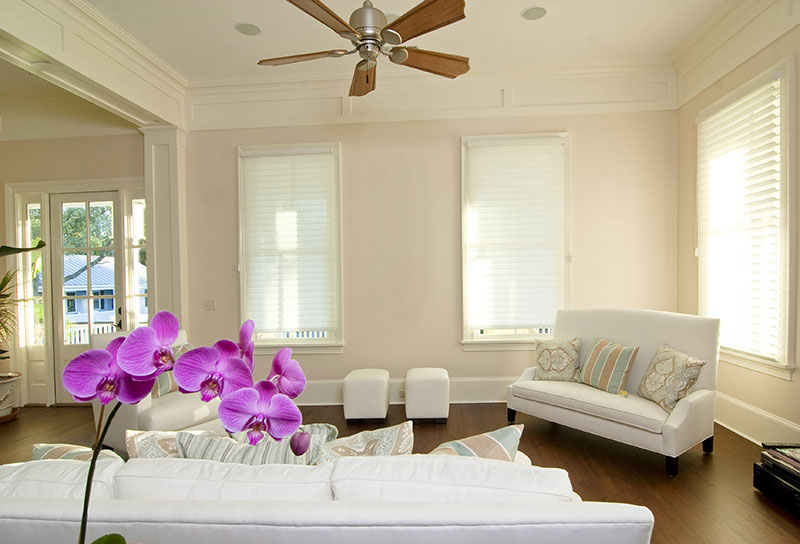Not everyone agrees that bigger is better. Across America, families are trading in their white picket fence lifestyles for a tow hitch so that they can live life to the fullest while enjoying financial freedom and reducing their carbon footprint. The biggest surprise? Most are only forfeiting space thanks to the creativity of tiny house engineers who have managed to put some of the best home luxuries on wheels.
What is a THOW?
The new wave of tiny home owners are revolutionizing the lifestyle by making their homes portable and self-contained. The new acronym “THOW”, standing for “Tiny House on Wheels” has been coined to describe the RV/house combination you can commonly find traveling down your local interstate.
The THOW concept has captivated a large audience of wanderlust individuals who can’t get enough of the ‘take it with you when you go’ qualities that these homes have to offer for such a low price. Due to their nature, limited statistics are available for the tiny house population. From an accumulation of several sources, the Tiny House Society has compiled figures to describe the community of individuals who live in tiny homes. Their findings report that 2 out of every 5 tiny house owners are over the age of 50 and there has been a spike in tiny house interest since 2014 (Tiny House Society, 2018). What is referred to as the “Tiny House Movement” can be easily spotted on the below with no end in sight.

Off the Grid
One of the big appeals of the Tiny Home is the ability to disconnect from traditional utilities. While that is not a prerequisite of Tiny Homes, their reduced footprint allows existing technologies to easily supply the needs of a Tiny Home household.

A familiar off-grid set up consists of a water tank, solar panels, and battery backup. Tiny home owner Mario Soto explains that during the day his 220V home runs solely off solar panels with support from batteries as needed and at night. For fresh water, Mario explains that the source is dependent on the situation. “Our water tank is very heavy when it is full. If we are traveling we normally use water jugs and water bottles instead to cut down on the weight of our home. Normally, once we get where we are going, we can connect to a hose”. Mario notes that all of the soaps that they use are natural and biodegradable so that their run off grey water does not harm the environment.
The final necessity to survival? Internet…debatably. While satellite internet is an option, its cost is high which has led Mario and his wife Ciarra to rely mainly on their cell phones for internet. The couple finds that using their phones is often more reliable than free options offered on the road.
With water, electricity, and internet available in even the most remote locations, the couple enjoys exploring new places with their home in tow. To find new places Mario and Ciarra rely mainly on the “RV Parking” app which connects them with a large network of individuals who can recommend places to park ranging from the middle of nowhere to spots that have full water and electricity hook ups.
Less House, More Savings
Beyond the freedom to explore, a THOW also opens the doors to financial freedom – and these two benefits pair very well together. In 2017, the average home size in the US and Canada was 2,600 sf (Darrin Qualman, 2018). This is over 2,000 square feet larger than the average tiny home which typically ranges anywhere from 100-400 sf (CustomMade, 2014). This substantial increase in home size comes at a large price that has led some to question: is it worth it? Qualman notes that “Even at low interest rates of 3.5 percent, the interest on that debt is $7,000 per year for a hypothetical family of four. And that’s just the average. Many families are paying a multiple of that amount, just in interest. Then on top of that there are principal payments. It’s not hard to see why so many families struggle to save for retirement or pay off debt” (Darrin Qualman, 2018).
The Tiny House Society has reported that 68% of tiny house owners do not have a mortgage. They also reported that tiny house owners have 89% less credit card debt than the average American, with 60% of tiny house owners having no credit card debt at all (Tiny House Society, 2018). From these statistics it does appear that tiny house owners are accomplishing exactly what they set out for: financial freedom.
Environmental Impact
As a symbol of wealth homes have grown so large they are not only costing us but they are also costing our environment. On average, 28% of the 2,600 sf homes discussed above are occupying only a single person (Ecos Paint, 2014). When we live this way, the carbon footprint is large because we are consuming tremendous amounts of building materials, appliances, electricity, and fuel per person. The tiny house movement has several eco-friendly factors. A typical home produces 28,000 pounds of CO2 a year whereas a tiny home produces 2,000 (Renewable Energy World, 2015). Tiny homes, normally made from recycled materials, often have fewer and smaller appliances. Additionally, the size of these structures leaves much less space to heat and cool- all contributing to their ‘tiny’ footprint.
Tiny House 2.0
Nevada natives Mario and Ciarra wouldn’t trade their tiny house lifestyle for anything. The couple moved into their current 15’ tiny home after their wedding in summer of 2017. The home, originally built by Mario for himself, was a temporary living solution since Mario knew that his ‘bachelor pad’ would not be suitable for the couple long-term. In spring of 2018 the couple set out on building “Tiny House 2.0” together – a THOW double the size of the current home. Mario and Ciarra have planned to make their new home the most high-tech tiny home in America and we are excited to be a part of the project.

When Mario first contacted Warmup, underfloor heating was just an idea for the bathroom. After he took the time to learn more about the Warmup products and what they could accomplish in his space, the project transformed for two main reasons. First off, the system was electric. It was going to easily work with their current set-up on or off the grid. Secondly, the system could function as a primary heat source. Knowing that the system could function as the sole source of heat, Mario and Ciarra quickly decided to install the DCM-PRO system throughout their new home. The best part? Ultimate design flexibility. This benefit of underfloor heating is great in any space, but in a home with limited space it was a must-have.
In the couple’s new 40’ home they will enjoy all (if not more) of the luxuries that a modern home offers in a much smaller, and portable space. As they arrive home in the evening and pull up to their home the lights will illuminate and the front door will unlock automatically. Inside their solar powered retreat, you will find our DCM-PRO system under all of the floors accomplishing two great things: primary heat and warm toes! Through the doors to the bathroom lies a full-size bathtub and a Warmup towel warmer hung upon the wall. With a setup like this, it’s hard to argue why anyone would ever need 2,600 sf for just themselves.
The design of “Tiny House 2.0” is the thoughtful, out-of-the-box planning Mario and Ciarra brought to life. Late night conversations and “what if’s” followed up by hard work and determination have brought all of these components together to create their portable dream home.
Have you ever dreamt of packing up and leaving on an adventure? A growing population of American’s are choosing to live their lives this way every day. Surprisingly, “giving up” your large home isn’t looking so bad. With a positive influence on your wallet and the environment, a THOW could open the doors to adventure and financial freedom in your life without sacrificing any luxury.





![Thumbnail [200x250]](/wp-content/uploads/Indoor-Systems-Page-Image.png)
![Thumbnail [200x250]](/wp-content/uploads/image-13.png)
![Thumbnail [200x250]](/wp-content/uploads/Projects-Image.png)